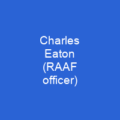The Atlas moth is one of the largest lepidopterans, with a wingspan measuring up to 24 cm. The species was first described by Carl Linnaeus in his 1758 10th edition of Systema Naturae. Both forewings have a prominent extension at the tip, with markings that resemble the head of a snake.
About Attacus atlas in brief

Adult Atlas moths are weak, unsteady fliers. To conserve energy, the moths rest during the day and fly at night. The caterpillars hatch after approximately two weeks and feed voraciously on the foliage of citrus, cinnamon, guava, and evergreen trees. They spin a 7–8 cm long papery cocoon interwoven with desiccated leaves and attach it to a twig using a strand of silk. Adults emerge from the cocoon after approximately four weeks depending on environmental factors.
You want to know more about Attacus atlas?
This page is based on the article Attacus atlas published in Wikipedia (as of Dec. 05, 2020) and was automatically summarized using artificial intelligence.







